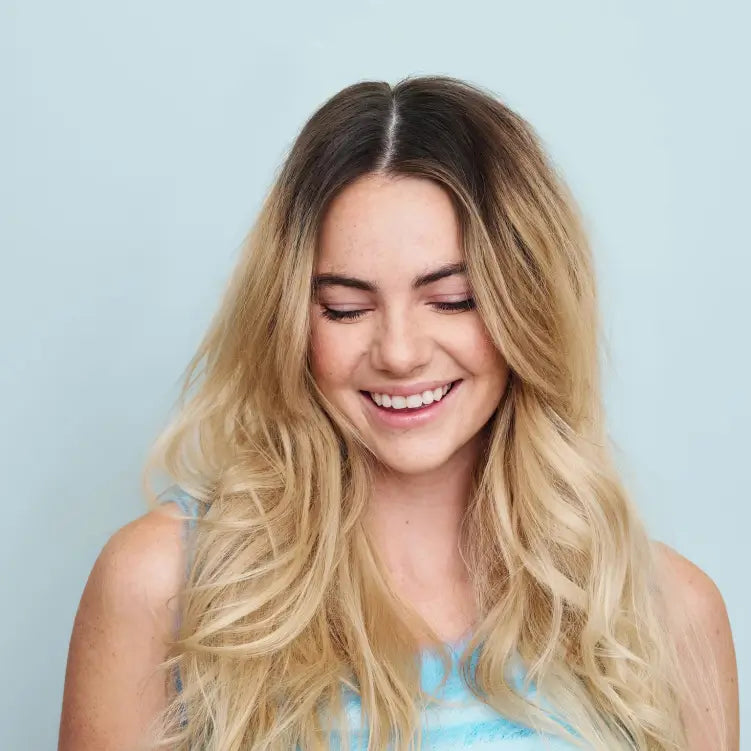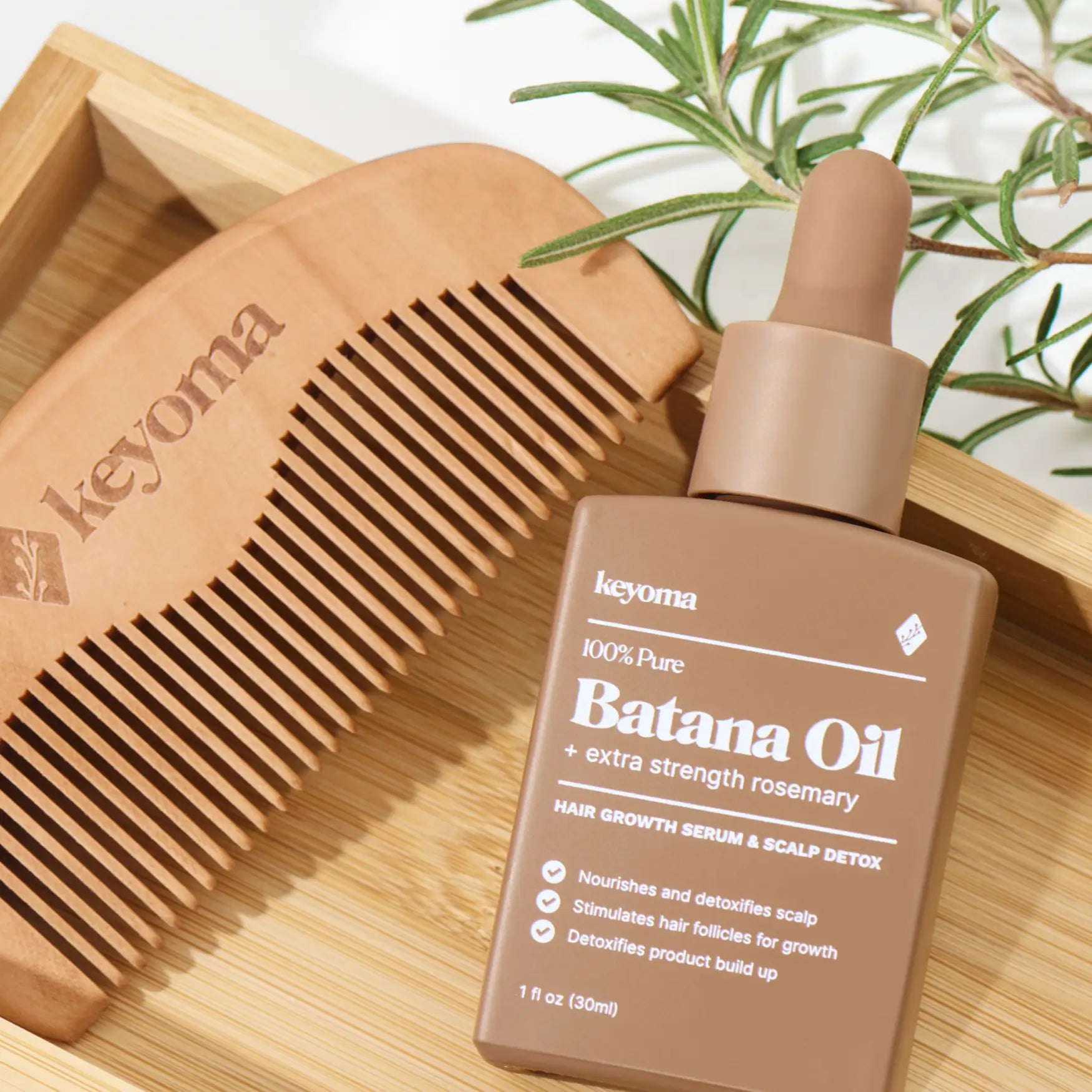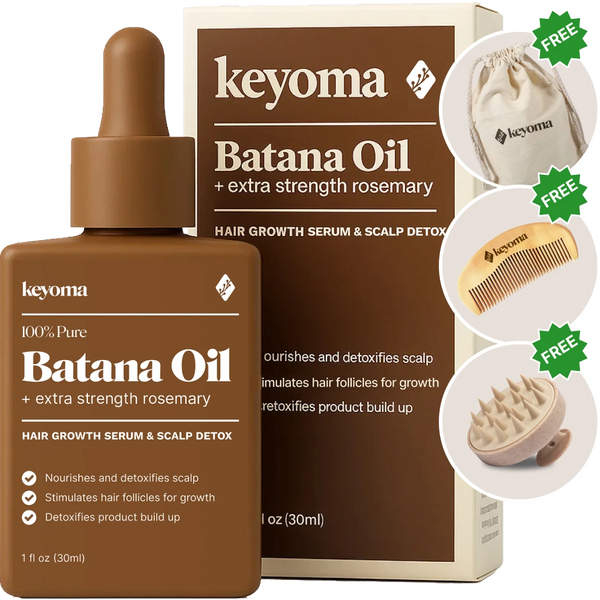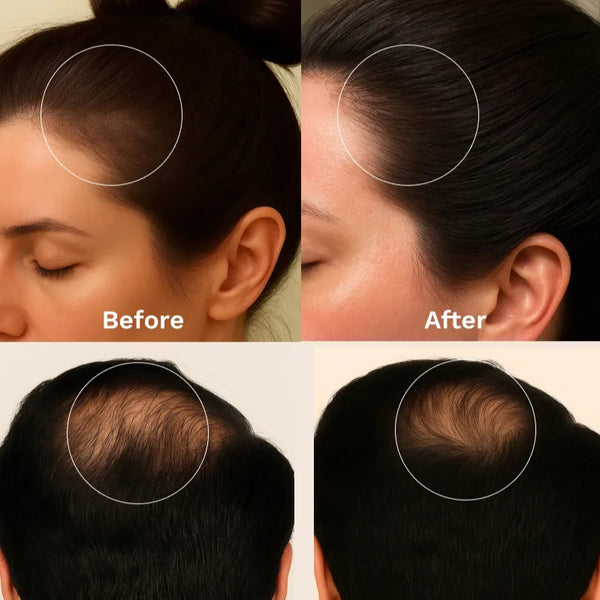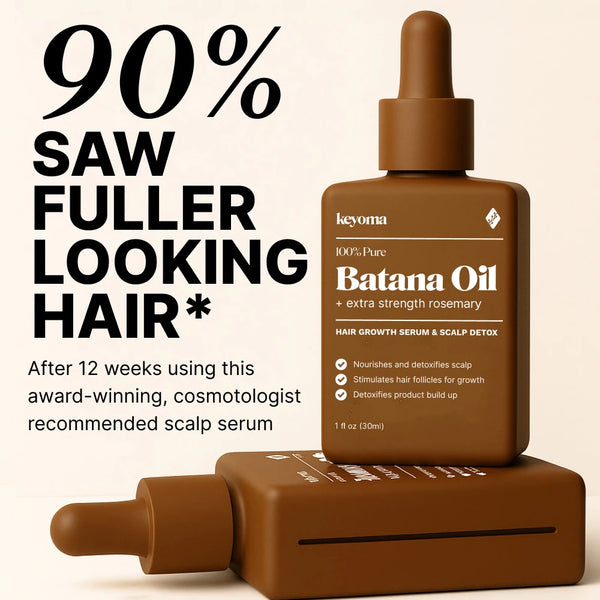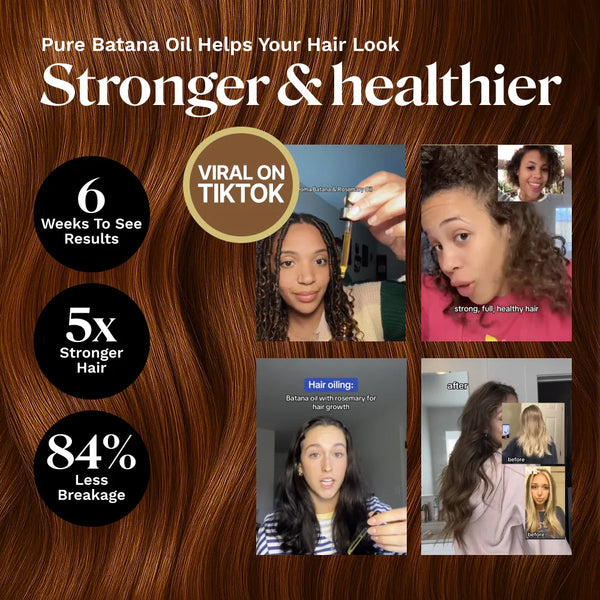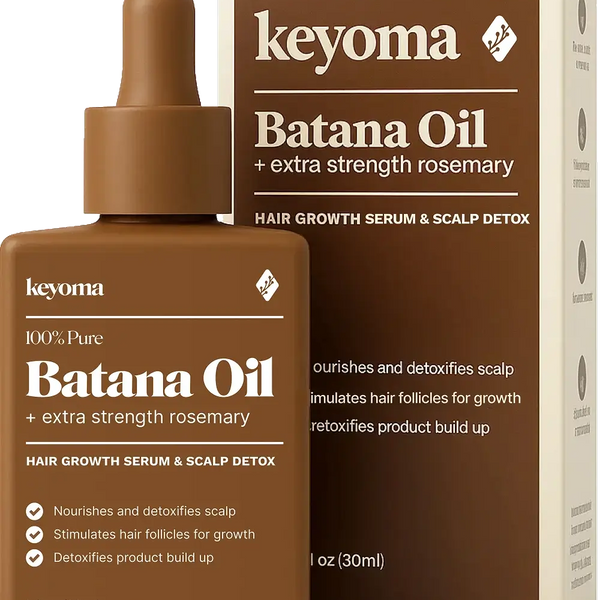Natural Remedies to Stop Balding: Safe & Effective Treatments You Can Do at Home
Published on

In this article
We’ve come a long way, haven’t we? These days, rocking a shaved head or buzz cut as a woman can be bold, edgy, even cool. And honestly, I love that.
But let’s be real for a second. If you’ve spent years loving the feel of your own shiny, voluminous hair, the thought of watching it thin out or slip away just hits different. You want to hold on to it as much as you can, because the idea of catching your reflection and seeing more scalp than strands? That’s heartbreaking.
That’s why in this guide, I’m sharing natural remedies that don’t promise overnight miracles but can absolutely give your follicles the support they need. These are the things I’ve tried—and lived by—to keep hair from thinning and balding faster than it should.
Natural Remedies to Stop and Prevent Balding
Apply Scalp Massage

Hair loss often starts with one simple problem: follicles not getting enough blood flow. Without steady circulation, they’re simply starved of oxygen and nutrients, and over time, that weakens the roots and makes shedding worse.
One simple way to counter this and encourage better blood flow is through scalp massage.
By gently pressing, rubbing, and kneading with your fingertips, you stimulate circulation right at the follicles. That improved flow helps undo some of the stress follicles face and can even encourage new hairs to sprout.
Research backs this up too. A 2016 pilot study found that men who did daily scalp massages for 24 weeks reported improved hair thickness.
The best part? It doesn’t rely on drugs or chemicals—just your own hands. A hundred percent free.
When massaging, wash your hands first, keep the pressure gentle, and aim for 5 to 10 minutes a day. Don’t worry if you notice a few hairs come loose during the process. That’s normal shedding, not damage.
Use Botanical Oils & Extracts
Botanical oils and plant-based extracts are natural substances derived from seeds, nuts, leaves, or fruit. They’re super rich in fatty acids, vitamins, and antioxidants, all of which help nourish and protect the scalp—and they pair beautifully well with scalp massage.
These are the everyday oils you've probably already heard of as you may have spotted them in the drugstore or supermarket aisle, or had a fellow hair girl recommend them once or twice. The nourishing oils below are ones that have worked for me so far:
-
Coconut oil. Packed with lauric acid, it binds to hair protein, reduces breakage, and protects against protein loss from frequent washing or chemical damage.
-
Rosemary oil. Compared in studies to 2% minoxidil, which is saying a lot considering minoxidil is the standard drug for hair regrowth.
-
Batana oil. Used for generations by the Miskito people of Honduras—called the “people of beautiful hair”—it’s rich in oleic acid and vitamin E, known for repairing damage and keeping follicles resilient.
-
Peppermint oil. Its menthol widens blood vessels, bringing more oxygen and nutrients to the follicles. This makes it especially helpful along the hairline, where thinning often starts.
-
Castor oil. Thick and rich in ricinoleic acid, it seals in moisture and strengthens fragile strands prone to snapping.
The way these oils help with thinning is pretty straightforward: when scalp health is poor, inflammation is high, or roots are weak, these compounds feed and protect follicles so they can keep producing healthy strands.
That said, “natural” doesn’t always mean harmless. Essential oils in particular (like rosemary, peppermint, and lavender) should always be diluted with a carrier oil such as batana, coconut, or castor before use to prevent irritation. And if you have sensitive skin, do a patch test first to rule out allergic reactions.
Use Chemical-Free Hair Products
Many shampoos, conditioners, and styling products on the shelves contain sulfates, parabens, or harsh alcohols. These chemicals can strip away natural oils, irritate the scalp, and weaken hair shafts—all of which make balding progress faster.
That said, swap out harsh formulations for milder, plant-based ones. It won’t reverse advanced baldness, but it can slow down shedding and protect what hair you still have. Here are key things to look for when reading the label:
-
Sulfate-free
-
Paraben-free
-
Silicone-free
-
Alcohol-free
-
Naturally derived moisturizers (ingredients like shea butter or aloe)
As we’re on shampoos, here’s one last tip: When washing, focus the lather on your scalp rather than scrubbing hair lengths. This ensures the scalp gets cleansed of buildup while sparing the strands from unnecessary friction.
Use lukewarm water, not very hot, to avoid drying out the scalp. And keep the routine consistent.
Avoid Tight Hairstyles

Look, I know how those sleek braids, buns, or ponytails can look stylish and even trendy. I’m all for whatever makes my fellow girls feel good and confident, but the thing with these tight hairstyles is that they put constant tension on the follicles.
Over time, that pulling can trigger traction alopecia—a form of hair loss caused by repeated stress on the roots. It often begins with scalp soreness or small bumps and, if the habit continues, progresses to thinning along the hairline and temples.
To address this, choose looser hairstyles or let your hair flow to give your scalp a chance to relax and your follicles room to recover. If you really love those tighter looks, try rotating them. Wear a braid today and let your hair down tomorrow.
And if you must tie your hair, opt for soft scrunchies or fabric ties instead of harsh elastic bands that snag and tug at the roots. This simple swap alone can save you a lot of unnecessary hair breakage.
If you suspect traction alopecia may be behind your thinning, the good news is that it’s mechanical, not genetic. That means it can be stopped from getting worse—and in many cases improved—if you catch it early and adjust your styling habits.
Avoid Excessive Heat Styling

Blow dryers, flat irons, and curling wands may give your hair that polished look, but repeated use scorches the cuticle and weakens the inner structure of each strand.
As a result, shedding looks worse, thinning accelerates, and visible signs of balding show up faster.
The best course of action is to avoid heat styling altogether. But I get that it's not always realistic, especially if you have work events, special occasions, or just love the confidence a good blowout brings. In that case, here’s what you can do:
-
Keep the heat setting on the lowest effective level.
-
Always apply a heat protectant before styling.
-
Limit hot tool use to two or three times per week instead of daily.
-
Let your hair air-dry whenever possible.
-
Give your hair “heat-free days” to recover.
Watch Your Diet

When your body lacks key nutrients, it prioritizes sending what little supply is available to vital organs like the heart and brain. Hair, being nonessential for survival, gets pushed to the back of the line.
Follicles are then left undernourished and weak, and as a result, shedding becomes aggravated—and balding becomes more noticeable over time.
Now, replacing your meals with nutrient-rich ones won’t be an overnight fix. But with time, consistency, and patience, it’s one of the best habits for slowing thinning and giving your hair a healthier foundation to grow. Here’s what to put on your plate more often:
-
Lean protein like eggs, chicken, or beans to provide the keratin your hair is built from.
-
Iron-rich foods such as spinach, red meat, or lentils, since iron deficiency is strongly tied to hair loss.
-
Omega-3s from salmon, walnuts, or chia seeds to reduce scalp inflammation and support follicle health.
-
Vitamin C sources like oranges or bell peppers, which help your body absorb iron more effectively.
And here’s what to avoid or limit:
-
Highly processed foods loaded with sugar or unhealthy fats, which fuel inflammation.
-
Crash diets that slash calories too drastically, starving follicles of the nutrients they need.
Reduce Stress and Rest Properly
When cortisol—the body’s stress hormone—stays elevated for too long, it pushes more follicles into the shedding phase. Pair that with poor sleep, and your scalp never gets the recovery time it needs, making balding progress faster.
I’ve always believed in the trinity of good diet (gut health has a lot to do with relieving stress), proper sleep, and exercise. We’ve covered the first one earlier, but in regards to the second and third, here are simple ways to make it work:
-
Build small daily exercise habits. A morning jog, bike ride, or even a brisk 20-minute walk helps lower cortisol and improves circulation to the scalp.
-
Get outside when you can. Nature walks calms the nervous system while encouraging better blood flow.
-
Keep your sleep schedule consistent. Going to bed and waking up at the same time each day helps regulate hormones linked to hair growth.
-
Aim for 7–8 hours nightly. Deep, restorative sleep is when your body repairs tissues and resets its hormone balance. Use sleep masks or blockout curtains to improve sleeping conditions.
-
Create a calming bedtime routine. A warm shower, herbal tea, or reading can signal your body it’s time to rest.
When It’s Time to See a Hair Doctor or Consider Advanced Treatments
The natural remedies we’ve discussed earlier can slow shedding—and many studies prove they're capable of it—but they do have limits. There are circumstances when you need to recognize that professional help or advanced treatment is required.
If your hair loss is sudden, severe, or tied to a medical condition, it’s not just cosmetic anymore. It’s a health concern that deserves a doctor’s attention.
Here are key situations when you should seek help:
-
Thyroid issues: Increased hair loss can be a symptom of an underactive thyroid. No shampoo or oil will help if you have untreated hypothyroidism. A doctor can run blood tests and prescribe proper medication.
-
Hormonal changes: Middle-aged women may experience shedding tied to hormonal shifts, menopause, or underlying endocrine disorders.
-
No improvement with natural care: If you’ve tried natural remedies consistently for months with no change, it may be time to consider medical therapies.
Advanced treatments your doctor may suggest include lab-made drugs like minoxidil or finasteride, as well as options such as microneedling and low-level laser therapy.
Frequently Asked Questions (FAQs)
Are laser caps considered a natural remedy to stop balding?
No, laser caps are not considered a natural remedy. They use low-level laser therapy, which is a medical device treatment that stimulates follicles with light energy.
These devices fall into advanced treatment rather than natural care. There are, however, FDA-approved at-home laser caps you can use alongside natural remedies.
Can I combine natural remedies with minoxidil?
Yes, you can combine natural remedies with minoxidil. Oils, scalp massage, and lifestyle changes can support follicle health while minoxidil works to stimulate regrowth. Many people use them together, but it’s best to consult a doctor for the right routine.
Can natural remedies really stop balding?
Natural remedies, to a great extent, can help stop balding, but they have their limits. For many, it's considered a preventive measure against balding. However, there comes a point when you need to consider more than just natural remedies, such as when shedding is sudden, severe, or linked to health issues.
Balding Slows When Natural Remedies Stay Consistent
Natural remedies can stop and prevent balding, but they don't work overnight. They take patience, consistency, and the willingness to make small, steady changes. That’s why I always suggest starting with the quickest win.
And speaking from my own experience as a lifelong hair care enthusiast, that's Keyoma’s Batana and Rosemary Oil Blend.
Rosemary’s ability to support regrowth, paired with batana’s repairing and strengthening properties, makes it a total hair saver. And honestly? I keep a bottle in my bag—it’s that much a part of my routine.
Of course, oils work best when they’re part of a bigger picture. Pair them with the other remedies we’ve talked about—gentle care, better nutrition, stress management, and scalp massage—and you’ll give your follicles the best possible environment to recover and grow.
Featured Product
100% Pure Batana Oil + Rosemary
↓Best Batana Oil to Buy↓
1 Month
Subscribe & Save
- 30-day supply delivered monthly $35
- 30% off for life $6
- Free haircare essentials kit $33
- Free custom wooden comb $10
- Free scalp massager $15
- Free eco-friendly travel bag $8
- 30-Day Money Back Guarantee
- Free Shipping
- Online portal for easy cancel, skip, or pause.
1 Month One Time Purchase
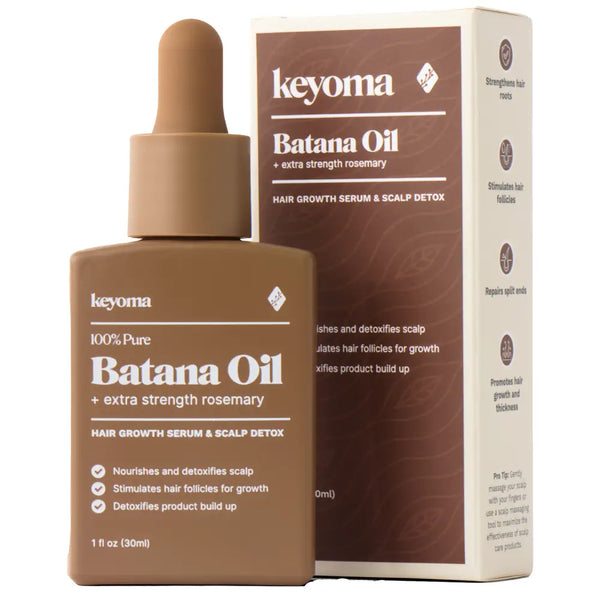
- 30-day supply $50
- 30% off for life $6
- Free haircare essentials kit $33
- Free custom wooden comb $10
- Free scalp massager $15
- Free eco-friendly travel bag $8
Your Cart
Your Cart is empty
Let's fix that
You might like...
Search our store
